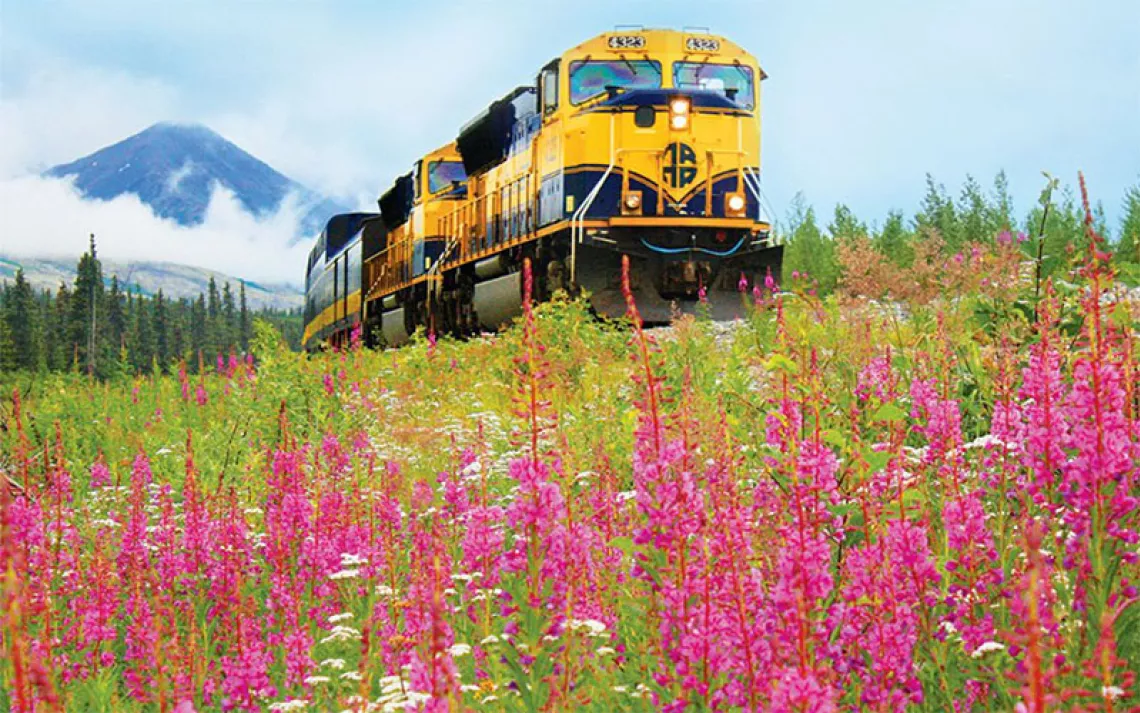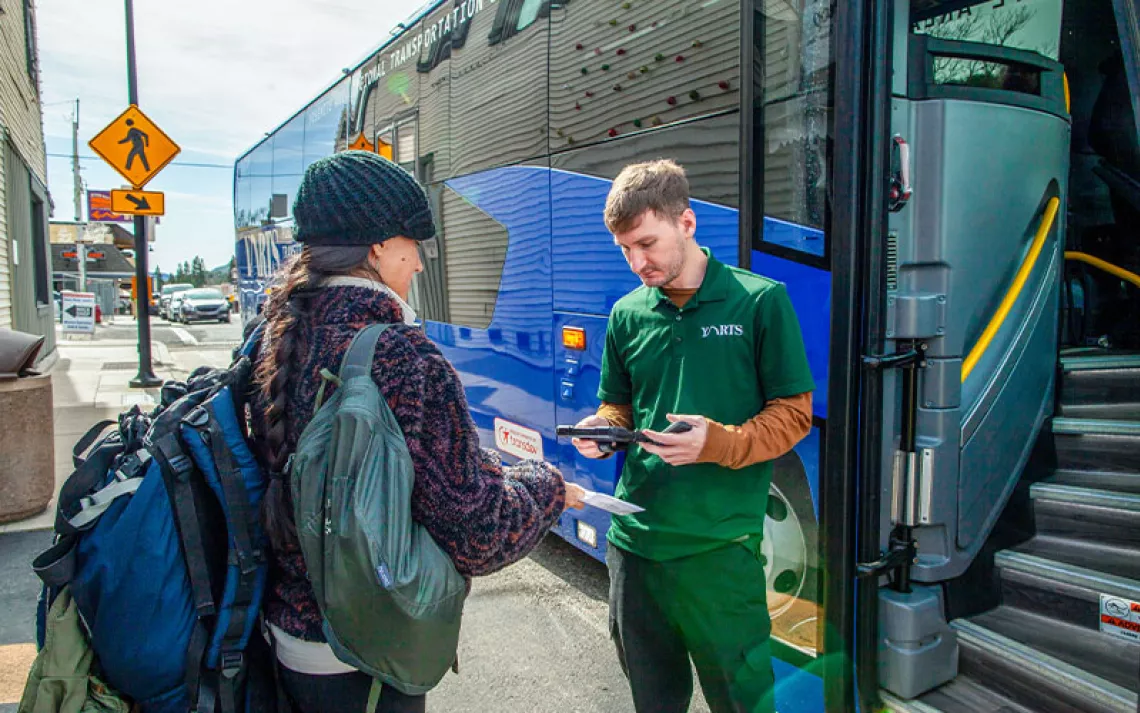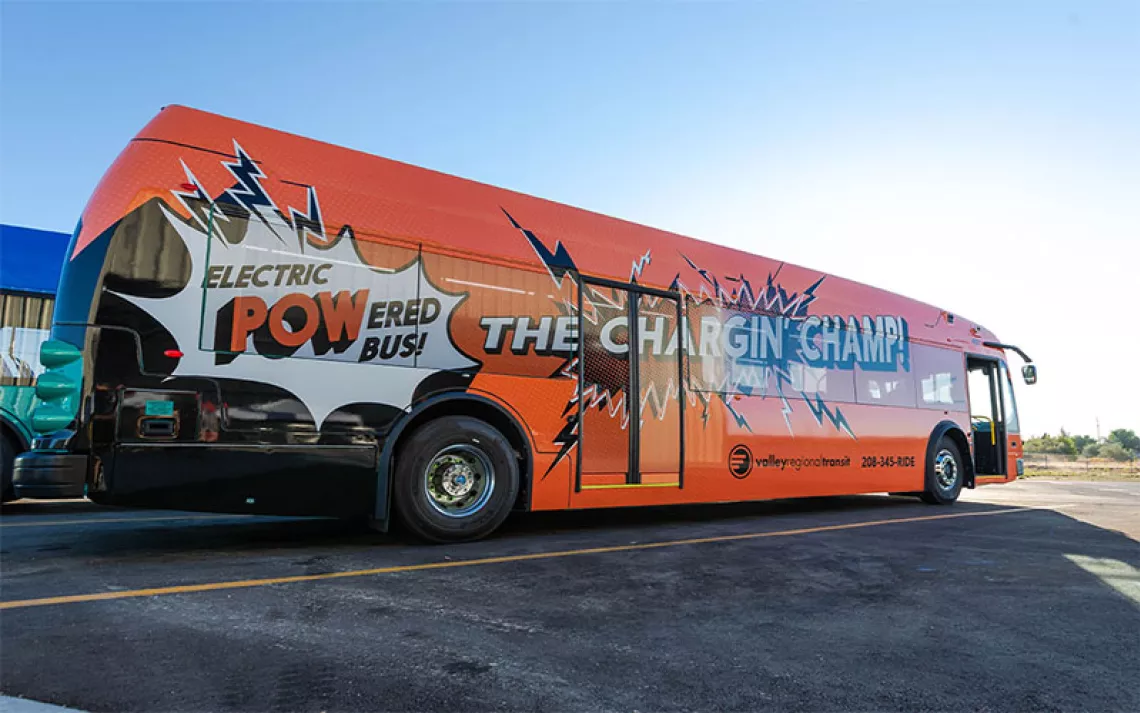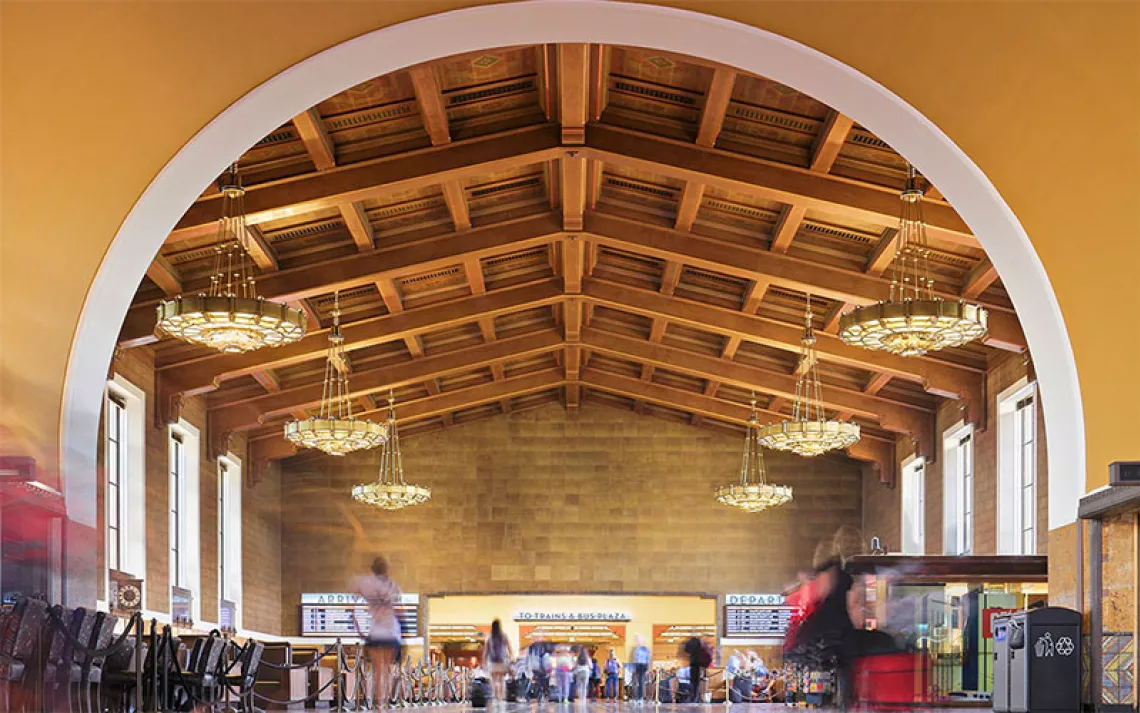Put My Superheroes on Amtrak
A wish list for luring more travelers to less polluting travel

Chicago's Union Station | Photo by Gerald Zaffuts/iStock
Earlier this month the Senate overwhelmingly passed a $1 trillion infrastructure bill. If you’re the kind of person who appreciates it when your elected government steps in to stop (or at least slow down!) climate change, that bill had some disappointments.
New affordable housing—which will not only take the edge off a brutal housing crisis but will also lower emissions significantly if it is built near transit or within walking distance to jobs and schools—got exactly bupkus. Same for research and development, manufacturing, and clean energy tax credits. Meanwhile, airports got $25 billion, which could only lead to emissions reductions if they use it to straight up pay people to stop flying, since electric airplanes that can carry more than a few people have a long way to go before they become commonplace.
But Amtrak got $66 billion, more than it’s received any year since it was founded. Whether or not you personally take the train, this is great climate policy, since train travel has some of the lowest emissions per passenger per mile (even lower, if Amtrak converts more routes to electric).
Amtrak plans to spend most of that $66 billion on long-deferred maintenance rather than new technology that would bring the United States in line with European or Japanese railroads (even where they were in the 1990s would be nice). Henry Grabar at Slate points out that in another country (like Japan) that $66 billion would go much farther, but the fact that the United States essentially stopped building or upgrading its trains (or really, any kind of transit) decades ago means that very few if any people in the US know how to build new transit, let alone do it efficiently.
But the infrastructure bill also made some changes that could prove even more important than the money—specifically, by changing Amtrak’s mission from achieving “a performance level sufficient to justify spending public money” to one that is focused on meeting “the intercity passenger rail needs of the United States.”
As a resident of the United States with a long and documented history of intercity passenger rail needs, I have very strong feelings about this. I’ve traveled by train in every city where I’ve had access to it and moved cross-country on Amtrak several times. A future where Amtrak will try new (and old) ideas to help more people take the train without immediately worrying about whether each experiment will turn a profit is a hopeful one, in part because it could result in the food in the dining car becoming edible again.
There’s a lot that Amtrak could do to make train travel a more pleasant experience for hardcore users while attracting and keeping the new riders who yearn to travel without having to worry about traffic, parking, their personal carbon budget, or standing by the side of the road in the rain waiting for the bus. Here, based on my years of riding the rails, are a few ideas.
It’s time to end, once and for all, the practice of letting railroads route their own freight trains in front of passenger rail
This is the big one, the problem-of-all-problems that has vexed Amtrak since it was created in 1971. At the time, railroad companies wanted to stop carrying passengers and exclusively run freight. Amtrak was created as a compromise—a federally subsidized passenger train system that paid privately owned railroads for the right to use the rails.
Those railroad companies, which still controlled 97 percent of the rails themselves, then forced passenger trains to stop or slow down whenever a freight train felt like cutting in line. This is the biggest reason why it takes longer to travel by train now than it did in the 1920s.
There have been many attempts to right this power imbalance, the most recent of which is Biden’s executive order urging the Surface Transit Board to “vigorously enforce” the agreements that railroads have repeatedly signed (but rarely honored) to help Amtrak trains run on time. This is one of the cheapest tools available to boost ridership—if the Surface Transit Board does manage to enforce it.
Make it easier to work remotely on Amtrak
The last two times I traveled cross-country on Amtrak, I was able to work the whole time. I’m not saying it was easy. The first time, I naively assumed that my portable wi-fi hotspot would make it just as convenient to work on the train as working from home. Rookie mistake. The United States is a big place, and quite a lot of it doesn’t have cell phone towers.
Still, I figured it out—I worked offline for most of the day and queued up emails to send and documents to download as soon as the train chugged into cell range. I also didn’t need to take any days off—which made traveling by Amtrak almost as economical as flying, even though it took two and a half days instead of a few hours.
I’ve found that Amtrak routes that do have reliable wi-fi are the best way to work while traveling (ferries being a close second). The seats are roomy, the views are often spectacular, it’s easier to work with collaborators if you’re all traveling together, and it’s harder to get motion sickness than on the bus.
But it could be better. Quiet cars, rentable wi-fi hotspots on trains or in train stations, up-to-date information about wi-fi strength and availability on different routes, and easy-to-find advice for remote work while traveling Amtrak would all make it much easier for those people who are able to work remotely to reduce emissions by traveling by train.
Make sure everybody knows about the benefits of Amtrak
Years ago, when I was moving from the Bay Area to the East Coast, a friend of mine who was going in the same direction suggested that we rent a van together and road trip it. After a coworker told me that (at least between certain stations) I could check 200 pounds of luggage for free via train (the limit has since changed, but it’s still a great deal), we both decided to move by train instead. It was so much cheaper than gas and a van rental.
Still, when I tell people about how cheap it is to move on Amtrak (or just bring a lot of weird gear on a trip), they are consistently surprised. Similarly, I’ve been surprised when friends know exactly which trains allow you to bring bicycles on board (or as checked baggage) or which legendary bike rides are accessible by Amtrak. Information like this—or at least a QR code promising me more information—should be as in my face as Amtrak advertisements featuring majestic mountaintops with trains going by.
Bring back the sleeping berth—and the night train
The present state of the pandemic makes this not practical right away. But in Europe, night trains are having a resurgence, partly due to the cultural phenomenon of “flight shame,” and partly because the benefits of traveling while unconscious shake out in favor of the train—at the end of your journey you can walk right out of the station and into the heart of a different city instead of spending an extra hour just getting out of the airport.
Amtrak does have private rooms on overnight routes, but they cost several hundred dollars above and beyond the price of a regular coach ticket. That might pencil out compared with, say, the cost of a rental car plus motels, but it’s still not remotely comparable to flying. In all the times I’ve traveled cross-country on Amtrak, I’ve never felt comfortable springing for a room.
There are cheaper, more compact styles of sleeping cars than the ones that Amtrak currently uses, however, such as the not especially glamorous but significantly more budget-minded Slumbercoach, or the capsule hotel-style rooms seen in the sleeper car in Some Like It Hot.
If, post-pandemic, Amtrak were to experiment with running a few sleeper cars overnight along the most popular short-haul flight routes (New York to Chicago and Los Angeles to San Francisco) it would be a worthy experiment. If Amtrak were willing to experiment even more and, say, partner with set designers on decor, or celebrity chefs or restaurants on route-specific train snacks, that night train is bound right for selfie central.
Put our nation’s superheroes on the train
If the FBI and the Pentagon can get themselves favorable treatment in Disney and Marvel movies, why not Amtrak, the little public/private partnership that could lower everyone’s per-mile carbon emissions?
Most big-budget films these days only feature trains as something to hang off of while being chased by good/bad guys, or as dystopian traps filled with zombies or toxic social hierarchies. Those of us who have seen North by Northwest (which features not only a glamorous train but also a very bad airplane) know just how much more cinema is capable of.
 The Magazine of The Sierra Club
The Magazine of The Sierra Club



